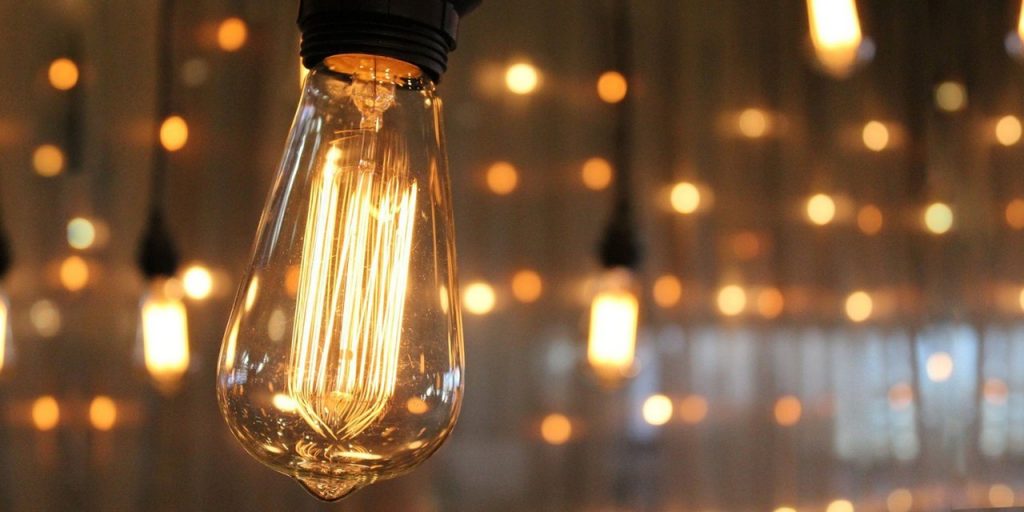
I’m republishing this article from a couple of years ago as BWS #11/28 because I still think it’s clever and no one has argued with me about it yet. Come on, tell me I’m wrong!
We need to intelligently and purposefully consider the impacts of our design and consumer choices, not just follow the herd, latest trend, or excellent marketing.
Incandescent bulbs are inefficient sources of light; news to no one. About 90% of the power into that bulb gets released as heat rather than light. Try unscrewing a lightbulb that has been on for a while and the 1st degree burn on your thumb and index finger will confirm. New technologies use about 80% of the electricity that to get the same amount of light. Less energy for the same light output = energy efficiency high-fives all around.
But what about the 90% energy input that was being converted into heat energy? Funny enough, physics doesn’t discriminate on the source of heat. Be it from a heater, a furnace, a heat pump, your dog, laptop or a lightbulb, a kW of heat is a kW of heat. If you had 25 – 100W lightbulbs in your house chugging away at 10% efficiency, they are providing 2.250 kW as heat energy (90% at 100% efficient). That heat doesn’t just vanish, it’s still a very real, heat energy input that is useful in cold climate homes.
Let’s take a crazy idea and build a thermally efficient envelope. Maybe a good one that only needs 2.250 kW to keep the building warm (enough). Could your lightbulbs not only provide you with all the light you need but also use all that wasteful heat as heating? First Law of Thermodynamics says yes and that law is known to be true. Some also claim this works in New England (way colder most of the time than anywhere in New Zealand, ever). Call it ‘reclaimed heat energy’ and slap an eco-sticker on it maybe now it’s ok to think about lightbulbs this way.
If you are really feeling eco-inspired one weekend, you might spend a few hundred bucks switching all your incandescents lights to LED’s. This would leave you with a heating deficit to make up from another heating source so throw in a new space heater at the same time. If the (crappy) building envelope hasn’t changed, then the amount of heat loss is the same the only thing that has changed is the heating source. Net result: intending to use less energy, end up using more, whoops.
The other cool thing about light bulbs (no pun intended) is that they are usually turned on when you’re in a room and usually off when you’re not; so heat the room you’re in but not the ones you aren’t, call that a ‘manual occupant sensor’ and again, more super eco-green points.
This incandescent heating source accidentally worked with varying degrees of success (pun intended) in New Zealand for decades. Maybe that’s why central heating never took off here. Mild winters, inefficient light bulbs and wool sweaters kept things reasonably comfortable (arguably). Now we’re pushing to take away all that ‘reclaimed heat energy’ and haven’t really replaced it with anything useful except big electric heat pumps and the envelope technology hasn’t kept pace.
Ok, departure from the ramble above. There are lots of other good benefits of LED’s and other similar technologies, most notably the life expectancy of an LED that dwarfs an incandescent. There is also the troubling problem of overheating in the summer, but maybe you can leave the windows open and there is more light in the summer so that’s not a problem. Lots of counter arguments both ways that you can leave in the comments section below.
This does highlight a greater point: we need to intelligently and purposefully consider the impacts of our design and consumer choices, not just follow the herd, latest trend, or excellent marketing. Wood treatments, white roofs, thermal paints, low-e coatings, attic ventilation can all have benefits in the right circumstances but also (and more importantly) can have negative drawbacks if you don’t understand why you are using that technology.
Gather information, form a theory and then test it. The scientific method is the backbone of science and the only meaningful way to innovate. That’s why we call it ‘building science’ not ‘building opinion’.



